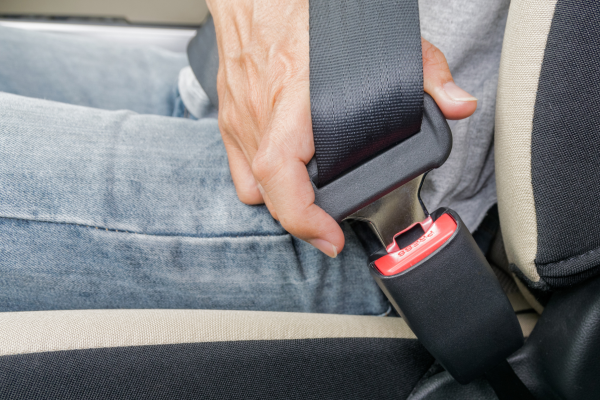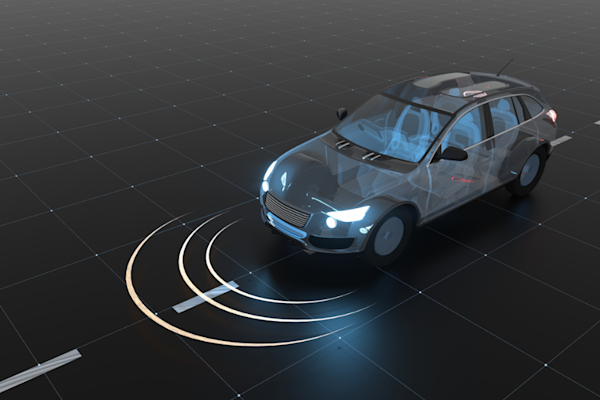Vehicle Safety
The Importance of Seat Belt Replacement Following an Accident

Buckle Up: Why Replacing Your Seat Belt After an Accident is a Must
Imagine this: Youre driving down the road, music playing, enjoying the ride. Out of nowhere, a car runs a red light. You slam the brakes, but its too lateimpact! Thankfully, your seat belt holds you in place, preventing you from flying forward. It did its job. But now, the question is: should you replace it?
Many drivers dont think about seat belt replacement after an accident. After all, if it looks fine, it should still work, right? Wrong! Just like airbags or crumple zones, seat belts are designed to function once in a high-impact collision. Even if they seem intact, hidden damage could mean they wont protect you in the next crash.
Lets dive into why replacing your seat belt after an accident is crucial for safety and what you should do next.
How Seat Belts Work: More Than Just a Strap
Seat belts are engineered with precision. They include:
- A Webbing Strap: This is the visible part that stretches across your chest and lap.
- A Retractor Mechanism: This controls how the belt extends and retracts.
- A Pretensioner: This tightens the belt instantly upon impact to keep you secured.
- A Load Limiter: This helps prevent excessive force on your body by slightly releasing the belt under extreme tension.
These components work together to distribute force and keep you safe. But once theyve been stretched, locked, or activated during a crash, they may not function correctly again.
What Happens to Seat Belts in an Accident?
Seat belts are not just passive accessories; they actively respond to impact. Heres what happens when you're in a crash:
- Pretensioners Engage: The system tightens the belt in milliseconds to hold you in place.
- Webbing Stretches: The belt material absorbs force, stretching slightly to reduce impact injuries.
- Retractor Locks: The belt locks to prevent excessive movement.
- Load Limiters Work: If the force exceeds safe levels, the belt slightly releases to reduce chest injuries.
After an accident, these mechanisms may be permanently activated or weakened. Even if your seat belt retracts normally, the internal components could be compromised.
Signs Your Seat Belt Needs Replacing
Not sure if your seat belt is damaged? Here are some key warning signs:
- It wont retract or extend smoothly.
- You hear strange clicking sounds when pulling it.
- The belt is visibly frayed, torn, or stretched.
- The retractor is locked and wont release.
- The airbag warning light stays on (some systems are linked).
Even if none of these signs are present, assume your seat belt needs inspection after any accidentespecially if airbags deployed.
The Hidden Danger of Not Replacing It
Skipping seat belt replacement is like reusing a cracked helmetit might look okay, but it wont protect you when it matters most.
Consider these risks:
- Reduced Effectiveness in Another Crash: The belt might fail to lock properly, increasing the risk of severe injuries.
- Weakened Webbing: A stretched belt wont distribute force evenly, leaving your body unprotected.
- Pretensioner Failure: If it doesnt engage, you could be thrown forward.
- Insurance and Legal Issues: If youre in another accident and the belt fails, insurers may deny coverage, arguing negligence.
The Right Way to Replace Your Seat Belt
So, what should you do? Follow these steps:
1. Get a Professional Inspection
Even if the seat belt appears fine, a certified mechanic or dealership can check the internal components and let you know if replacement is necessary.
2. Replace with OEM or Certified Parts
Always use Original Equipment Manufacturer (OEM) seat belts or reputable certified replacements. Cheap, off-brand seat belts can be risky.
3. Check with Insurance
Some policies cover seat belt replacement after an accident. Contact your provider to see if its covered.
4. Never Reuse Junkyard Seat Belts
It might be tempting to grab a replacement from a salvaged vehicle, but you have no way of knowing its history. Play it safealways get a new one.
A Real-Life Story: When a Seat Belt Failed
Sarah, a mother of two, was in a minor accident. Her seat belt locked up but seemed to work fine afterward. She decided not to replace it. A year later, another driver hit her car, and her seat belt failed to lock properly. She suffered severe injuries that could have been prevented.
Sarah later learned that her seat belt had been compromised in the first accident. It was a hard lesson, but she now tells everyone: If youre ever in an accident, replace your seat belt. Its not worth the risk.
Final Thoughts: Dont Gamble with Safety
Your seat belt is your first line of defense in an accident. Its designed to save your lifebut only if it’s in proper working condition.
After a crash, dont just assume everything is fine. Get your seat belts inspected and replaced if necessary. Its a small price to pay for safety, peace of mind, and protecting your loved ones.
So, the next time you hear someone ask, Do I really need to replace my seat belt after an accident?you know the answer.
Yes. Every time. No exceptions.
Buckle Up: Why Replacing Your Seat Belt After an Accident is a Must
Imagine this: Youre driving down the road, music playing, enjoying the ride. Out of nowhere, a car runs a red light. You slam the brakes, but its too lateimpact! Thankfully, your seat belt holds you in place, preventing you from flying forward. It did its job. But now, the question is: should you replace it?
Many drivers dont think about seat belt replacement after an accident. After all, if it looks fine, it should still work, right? Wrong! Just like airbags or crumple zones, seat belts are designed to function once in a high-impact collision. Even if they seem intact, hidden damage could mean they wont protect you in the next crash.
Lets dive into why replacing your seat belt after an accident is crucial for safety and what you should do next.
How Seat Belts Work: More Than Just a Strap
Seat belts are engineered with precision. They include:
- A Webbing Strap: This is the visible part that stretches across your chest and lap.
- A Retractor Mechanism: This controls how the belt extends and retracts.
- A Pretensioner: This tightens the belt instantly upon impact to keep you secured.
- A Load Limiter: This helps prevent excessive force on your body by slightly releasing the belt under extreme tension.
These components work together to distribute force and keep you safe. But once theyve been stretched, locked, or activated during a crash, they may not function correctly again.
What Happens to Seat Belts in an Accident?
Seat belts are not just passive accessories; they actively respond to impact. Heres what happens when you're in a crash:
- Pretensioners Engage: The system tightens the belt in milliseconds to hold you in place.
- Webbing Stretches: The belt material absorbs force, stretching slightly to reduce impact injuries.
- Retractor Locks: The belt locks to prevent excessive movement.
- Load Limiters Work: If the force exceeds safe levels, the belt slightly releases to reduce chest injuries.
After an accident, these mechanisms may be permanently activated or weakened. Even if your seat belt retracts normally, the internal components could be compromised.
Signs Your Seat Belt Needs Replacing
Not sure if your seat belt is damaged? Here are some key warning signs:
- It wont retract or extend smoothly.
- You hear strange clicking sounds when pulling it.
- The belt is visibly frayed, torn, or stretched.
- The retractor is locked and wont release.
- The airbag warning light stays on (some systems are linked).
Even if none of these signs are present, assume your seat belt needs inspection after any accidentespecially if airbags deployed.
The Hidden Danger of Not Replacing It
Skipping seat belt replacement is like reusing a cracked helmetit might look okay, but it wont protect you when it matters most.
Consider these risks:
- Reduced Effectiveness in Another Crash: The belt might fail to lock properly, increasing the risk of severe injuries.
- Weakened Webbing: A stretched belt wont distribute force evenly, leaving your body unprotected.
- Pretensioner Failure: If it doesnt engage, you could be thrown forward.
- Insurance and Legal Issues: If youre in another accident and the belt fails, insurers may deny coverage, arguing negligence.
The Right Way to Replace Your Seat Belt
So, what should you do? Follow these steps:
1. Get a Professional Inspection
Even if the seat belt appears fine, a certified mechanic or dealership can check the internal components and let you know if replacement is necessary.
2. Replace with OEM or Certified Parts
Always use Original Equipment Manufacturer (OEM) seat belts or reputable certified replacements. Cheap, off-brand seat belts can be risky.
3. Check with Insurance
Some policies cover seat belt replacement after an accident. Contact your provider to see if its covered.
4. Never Reuse Junkyard Seat Belts
It might be tempting to grab a replacement from a salvaged vehicle, but you have no way of knowing its history. Play it safealways get a new one.
A Real-Life Story: When a Seat Belt Failed
Sarah, a mother of two, was in a minor accident. Her seat belt locked up but seemed to work fine afterward. She decided not to replace it. A year later, another driver hit her car, and her seat belt failed to lock properly. She suffered severe injuries that could have been prevented.
Sarah later learned that her seat belt had been compromised in the first accident. It was a hard lesson, but she now tells everyone: If youre ever in an accident, replace your seat belt. Its not worth the risk.
Final Thoughts: Dont Gamble with Safety
Your seat belt is your first line of defense in an accident. Its designed to save your lifebut only if it’s in proper working condition.
After a crash, dont just assume everything is fine. Get your seat belts inspected and replaced if necessary. Its a small price to pay for safety, peace of mind, and protecting your loved ones.
So, the next time you hear someone ask, Do I really need to replace my seat belt after an accident?you know the answer.
Yes. Every time. No exceptions.


